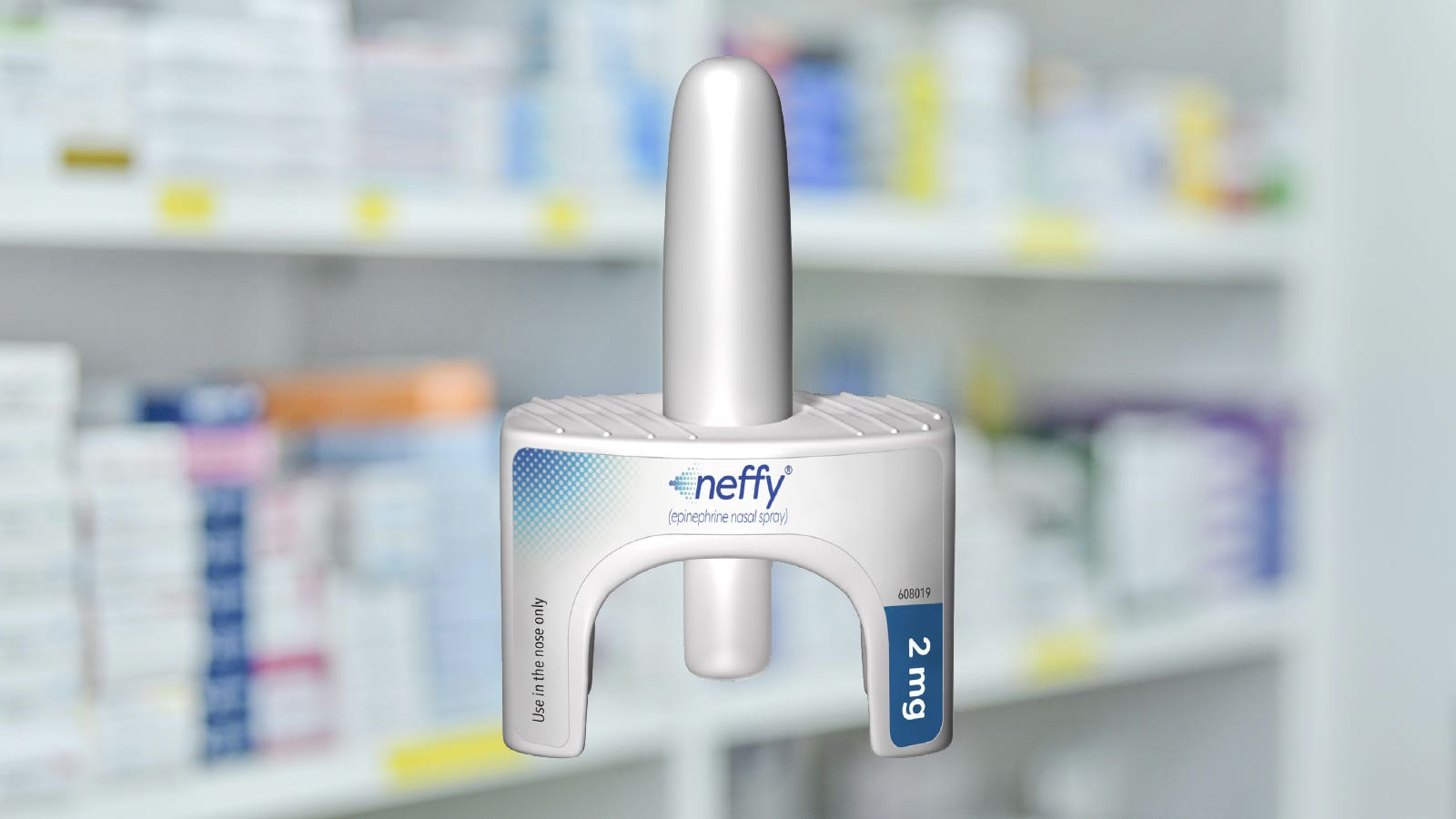
NEFFY IS ABOUT TO HIT SHELVES: CONSIDERATIONS FOR PRESCRIBING
The FDA recently approved the first needle-free epinephrine product (neffy), an alternative to injectable epinephrine (EpiPen) for anaphylaxis and other allergic reactions -- and I will be prescribing it on day one.
If someone experiences a severe allergic reaction, also known as anaphylaxis, epinephrine is the fastest, most effective treatment. The only route that people could receive this life-saving medication until recently was through an injection. Epinephrine is available to people in an auto-injector such as EpiPen and Auvi-Q, so that it is easier and faster to administer compared to drawing up epinephrine in a syringe. However, only 40% of the highest-risk people who need to carry an auto-injector actually do -- that leaves 60% at risk. This may be for various reasons, including the high costs of the devices and fear of needles.
With the approval of the new epinephrine nasal spray, the first needle-free alternative to epinephrine auto-injectors, the allergy world is abuzz with excitement. I have been anxiously waiting for the FDA to approve the nasal spray since they asked ARS Pharmaceuticals for an additional study nearly a year ago. But expert opinions are mixed: Is it worth prescribing?
The nasal spray contains 2-mg of epinephrine per dose, which is equivalent to a 0.3-mg dose found in an auto-injector, and is approved for people who weigh at least 30 kg (about 66 lb). The approval was based on four clinical pharmacology studies showing that epinephrine blood concentrations, as well as blood pressure and heart rate, in healthy individuals was similar whether they received epinephrine through the nasal spray versus an auto-injector.
There are several potential advantages regarding using the epinephrine nasal spray. It is a small nasal spray that can fit into a person's pocket and can be quickly administered without the fear of using a needle (as many as two in three children and one in four adults have significant fears around needles). It has a shelf life of 30 months and can withstand temperatures up to 122° F. If the epinephrine nasal spray becomes frozen, it can still be thawed and used. On the other hand, epinephrine auto-injectors only last for 12-18 months and need to be stored at room temperature. The epinephrine nasal spray has been tested in people who have a stuffy nose and it appears it still absorbs well into the bloodstream.
However, there are some potential concerns. The epinephrine nasal spray was not studied in people who were experiencing anaphylaxis. When the nasal spray is rolled out this fall, I expect real world studies will be conducted to determine its true effectiveness. Additionally, cost may be a concern for some. According to the ARS Pharmaceuticals press release, a two-pack will cost $199 for uninsured patients, those with a high deductible insurance plan, or if the plan does not cover the epinephrine nasal spray. Otherwise, most commercially insured patients will pay $25 with their co-pay savings program. In addition, people will need to discuss with their doctor whether they can use the epinephrine nasal spray if they have a history of nasal polyps, deviated septum, and/or nasal surgery because these conditions may impact absorption.
Because real-world data are not available yet, some allergists, pediatricians, primary care doctors, and other physicians may be hesitant to prescribe the nasal spray right away. However, I believe the benefits outweigh the risks: if it means more patients will carry the drug with them and are more likely to use it, then it's worthwhile. The safest approach when starting is to encourage patients to hold on to both the epinephrine nasal spray and an epinephrine auto-injector. If the nasal spray does not work quickly, then your patients will have an injectable device as a backup. However, this may be costly for patients, so please take that into consideration when working with individual patients or families. Parents will also need to assess whether their kids will tolerate a nasal spray versus an auto-injector.
I am excited that there is now a needle-free option for epinephrine. I believe that over time, it will encourage more people to carry this life-saving drug with them at all times. Although there are some potential challenges during the initial rollout, I will be counseling my patients about the risks and benefits of using the epinephrine nasal spray, and will likely be prescribing this medication as soon as it becomes available in the coming weeks.
Zachary Rubin, MD, is a pediatrician specializing in allergy and immunology.
Rubin reported no relevant disclosures.